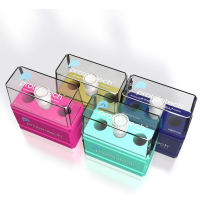Nucleotide Excision Repair in Nuclear Extracts from Xenopus Oocytes
互联网
575
Limited nucleotide excision repair (NER) requires at least ∼40 proteins in extracts from purified proteins ( 1 , 2 ) although perhaps hundreds of proteins may influence DNA repair in cells. For efficient DNA repair in extracts, it is important to utilize a system containing large quantities of active DNA repair proteins uncontaminated with nonspecific nucleases. Unlike extracts derived from mammalian cells that repair ∼2% of the input DNA, both injected Xenopus oocytes ( 3 ) and oocyte nuclear extracts can repair ∼100% of the input damaged DNA by NER with little or no synthesis on undamaged control substrate (Fig. 1 ). Repair activity in extracts can be inactivated with antibodies and/or inhibitors, and then repair can be restored by addition of exogenous proteins ( 4 ). A further advantage of the Xenopus system is that results obtained from injection experiments in living cells can be compared to results obtained in nuclear extracts.
Fig. 1. Rapid repair of cyclobutane pyrimidine dimers. Duplicate 0.2-μg samples of uniformly labeled UV-irradiated plasmid pSP65 (Promega) containing ∼4 dimers/plasmid were incubated with nuclear extract containing ∼2 nuclei/reaction. Recovered DNA was linearized with Eco RI, digested with T4 UV endonuclease, electrophoresed on a 1% alkaline-agarose gel, and autoradiographed. Adapted with permission from ref. ( 4 ).









